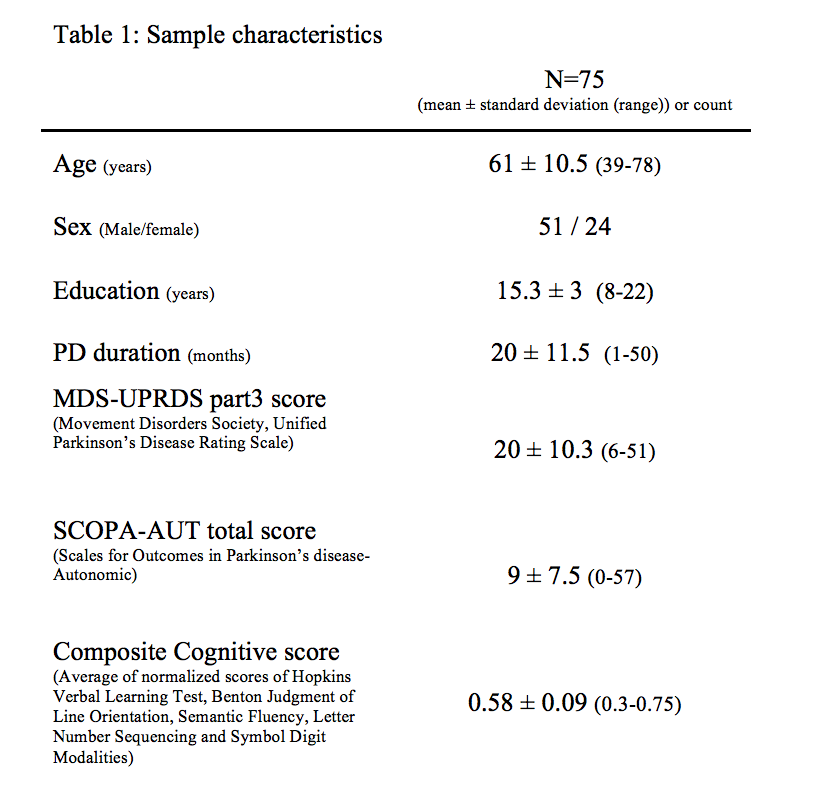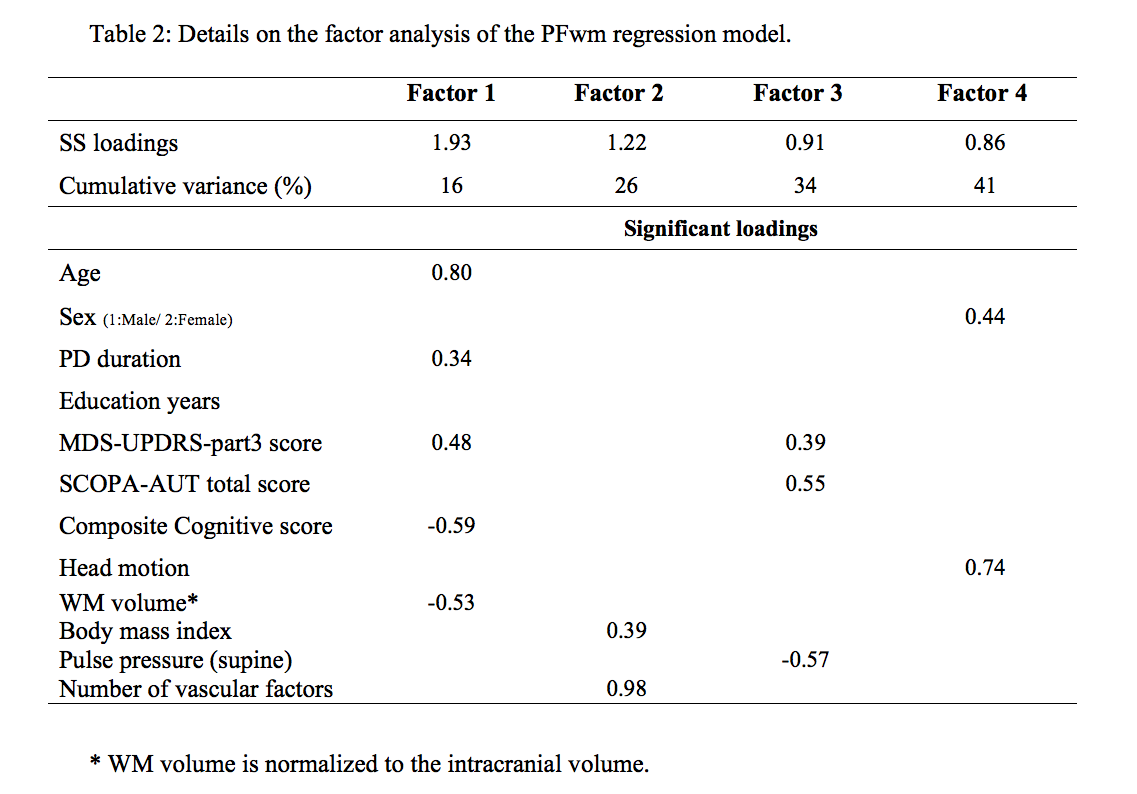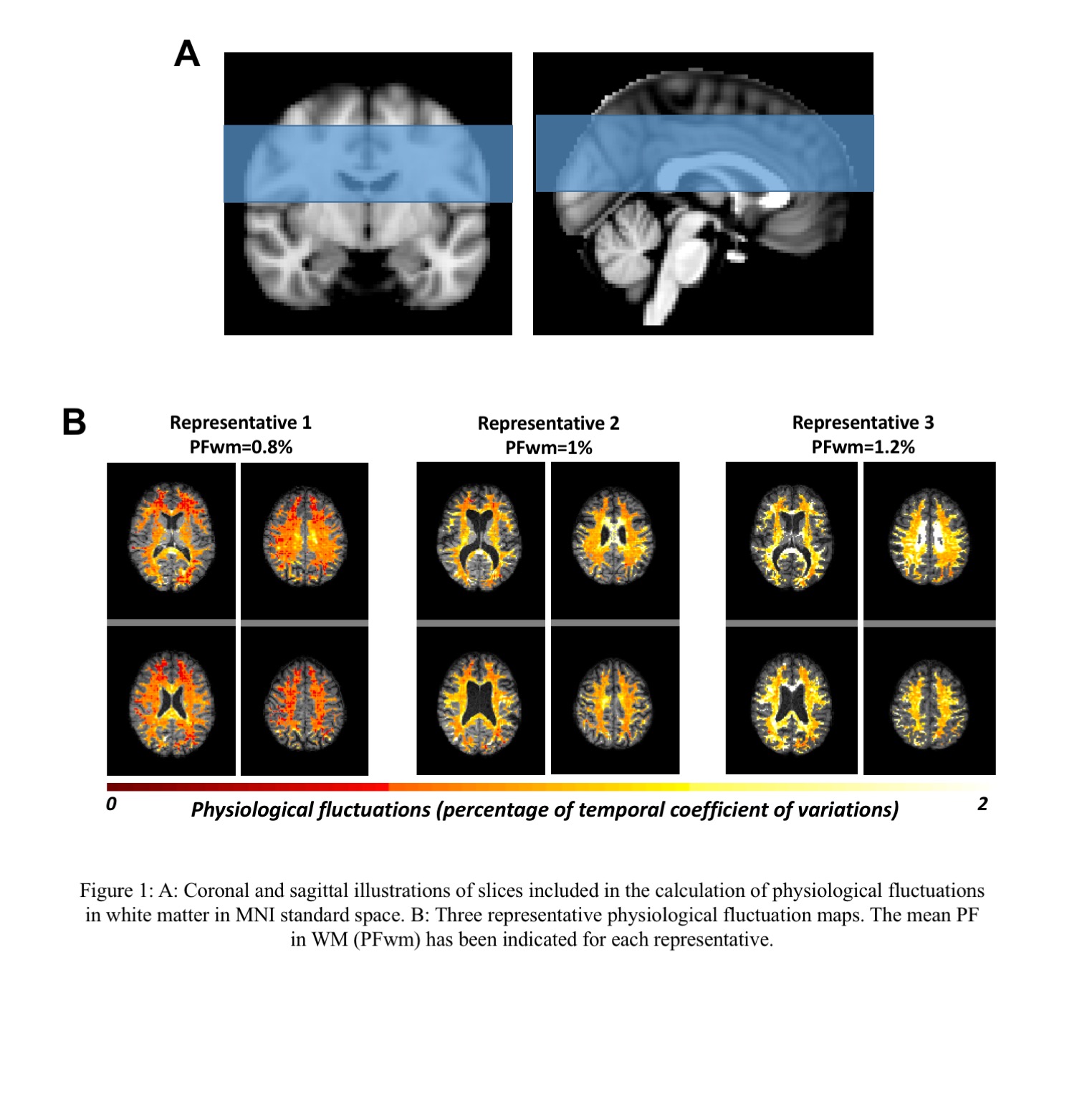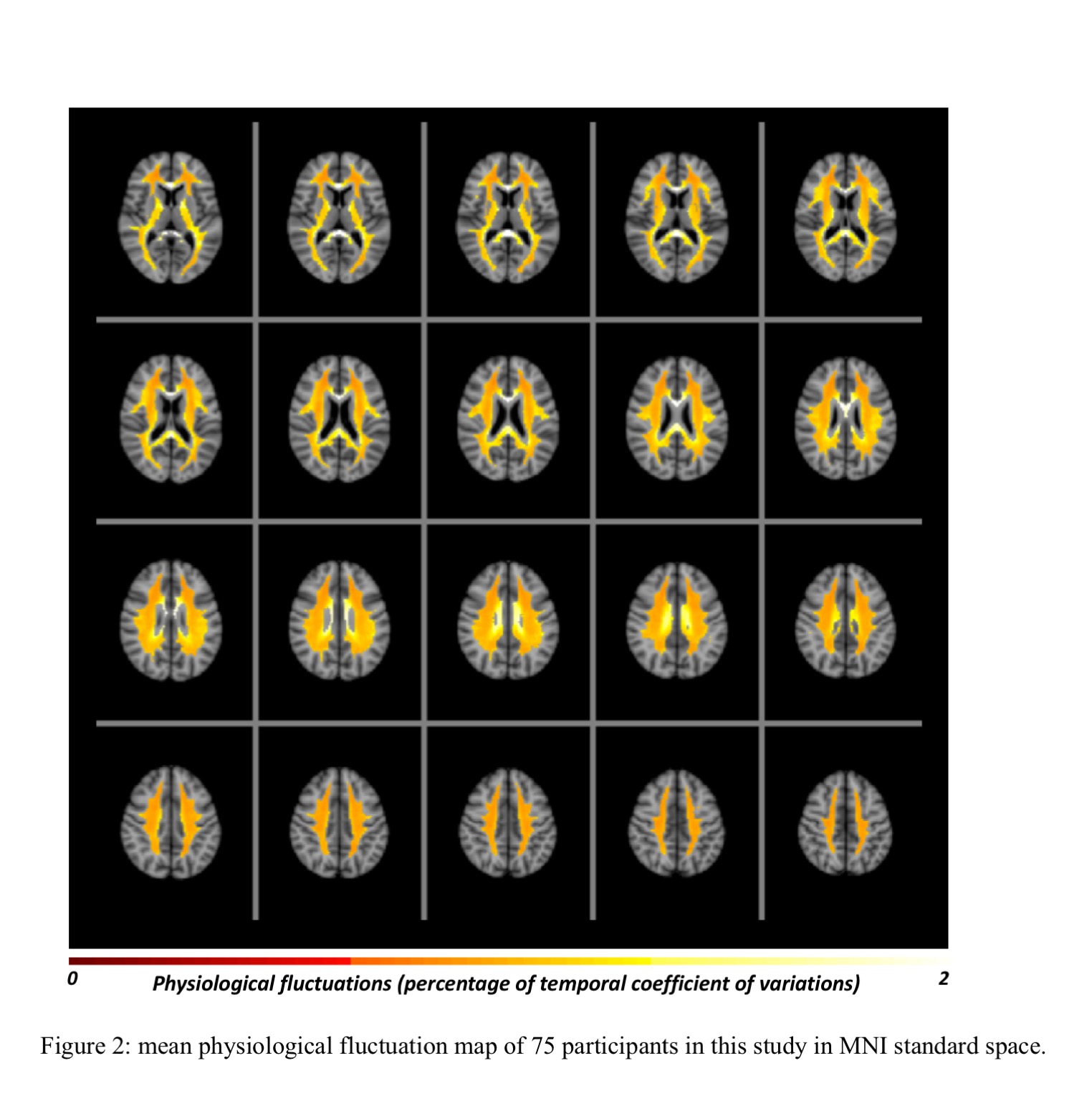Session Information
Date: Thursday, June 8, 2017
Session Title: Parkinson's Disease: Neuroimaging And Neurophysiology
Session Time: 1:15pm-2:45pm
Location: Exhibit Hall C
Objective: To examine the relationship between physiological fluctuations in white matter and disease severity in adults with Parkinson’s disease.
Background: Parkinson’s disease (PD) is the second most common neurodegenerative disorder associated with predominantly motor but also cognitive and autonomic impairments. Symptom severity varies among people with PD, thus an opportunity exists to improve our understanding via novel neuroimaging markers. In this study, we aim to study cerebrovascular dysfunction in PD by considering cardiac-related beat by beat physiological fluctuations in the brain’s white matter (PFwm) using resting state functional magnetic resonance images (rs-fMRI). While PFwm is classically regarded as nuisance effect in grey-matter connectivity analysis, it has potential as a viable index of intracranial cardiac-related pulsatility. Previous research showed that PFwm increases with age and among people with Alzheimer’s disease.
Methods: Data was obtained from Parkinson’s Progression Markers Initiative (N=75 adults with PD, [Table 1]). We calculated temporal coefficient of variation for each voxel of rs-fMRI and extracted the global WM mean as PFwm for each participant (MATLAB2015, SPM12). Figure 1 shows three representative physiological fluctuation maps. We performed a factor analysis to model principal factors of PD symptoms and a multiple regression to assess the relationship between PFwm and principal factors of PD symptoms.
Results: Figure 2 shows the average of physiological fluctuation maps for participants in this study. The factor analysis identified four main factors ([Table 2]). In multiple regression analysis, PFwm was associated with factor 1 (t=3.6, p<0.001) and factor 2 (t=3.1, p<0.001). Given these factors loadings, elevated PFwm was positively associated with age, disease duration, number of vascular risk factors and body mass index and inversely related to motor and cognitive performance (i.e., more severe symptoms).
Conclusions: This study suggests that WM physiological time series features in rs-fMRI can be used to explain between-subject differences among people with PD. PFwm can potentially be used to study PD patients at early stages before these hemodynamic abnormalities lead to structural changes in WM (e.g., white matter hyperintensities or damage to WM tissue).
References:
- Shirzadi, et al. AAIC 2016. DOI: http://dx.doi.org/10.1016/j.jalz.2016.06.1906.
- Makedonov, et al. Neurobiology-of-Aging2016;37:12-18.
To cite this abstract in AMA style:
Z. Shirzadi, H. Sharmarke, A. Robertson, A. Metcalfe, S. Duff-Canning, C. Marras, A. Lang, M. Masellis, B. MacIntosh. Cardiac-related pulsatility in white matter is associated with cognitive and motor performance in patients with Parkinson’s disease [abstract]. Mov Disord. 2017; 32 (suppl 2). https://www.mdsabstracts.org/abstract/cardiac-related-pulsatility-in-white-matter-is-associated-with-cognitive-and-motor-performance-in-patients-with-parkinsons-disease/. Accessed December 27, 2025.« Back to 2017 International Congress
MDS Abstracts - https://www.mdsabstracts.org/abstract/cardiac-related-pulsatility-in-white-matter-is-associated-with-cognitive-and-motor-performance-in-patients-with-parkinsons-disease/




